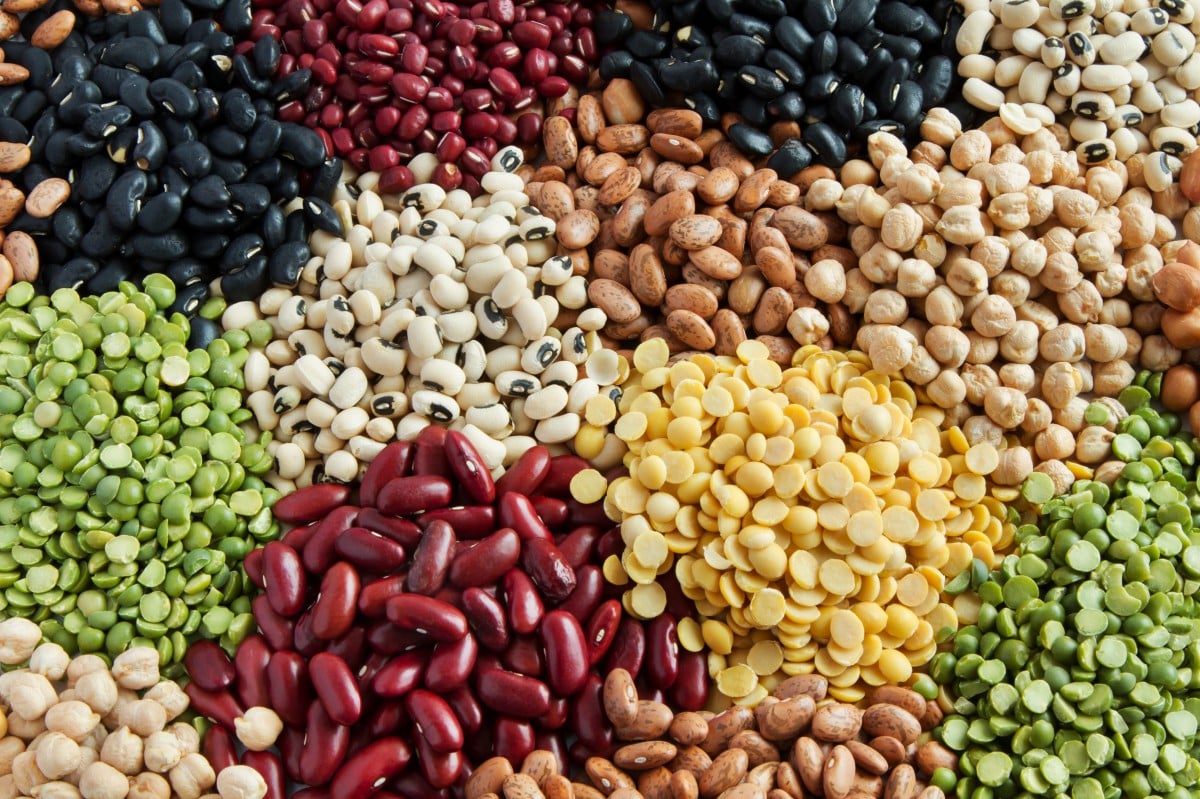Expanding our ingredient repertoire to build the good food future

The Good Food Institute is dedicated to shifting production of meat, eggs, and dairy away from industrial animal agriculture. To succeed, these new products need to be at least as good in terms of flavor, aroma, and appearance, while not requiring consumers to sacrifice in terms of price or convenience.
Beyond plant-based protein
So far, plant-based proteins have received the bulk of the attention in the animal-free space. And while the “protein” aspect of plants is important, major components of plant sources — starches and fibers — can deliver some of the same desired properties, and in some cases, fill in where proteins would otherwise fall short. For example, starches (especially those derived from plant protein crops, like pulses) can provide plant-based meat with the texture expectations that accompany the bite and chew of a burger, sausage, or any other meat product. Fiber (which is entirely lacking in animal-based meat) doubles in its ability to provide known nutritional benefits and influence texture — not just imparting a firm bite, but also in replicating the fibrous, muscle-striata nature of whole muscle products when paired with extrusion, a leading production technology of plant-based meat.
However, there is much more that can be done to optimize plant-based meat – which is why GFI has prioritized funding open-access research in this area through our inaugural Competitive Research Grant Program. We believe unrestricted access to the research will benefit the entire scientific community and food industry.
While our academic partners pave the way toward a level playing field for alternative protein research, industry is making its own waves. Chile-based startup NotCo recently secured $30 million to further develop its machine learning platform that identifies and maps the molecular properties of different plants. The company uses this database of properties for comparison to the molecular structure of animal-based foods, determining which plant-based proteins can best replicate animal-based meat’s taste, texture, and color. Other examples of industry research include the plant breeding companies, Equinom and Benson Hill Biosystems, both of which are developing crops optimized for plant-based meat, egg, and dairy application.
Farming cells directly
Cereal crops and legumes are not the only non-animal game in town. We can directly “farm” non-animal cells (bacteria, algae, fungi) through a process sometimes referred to as “cellular agriculture.”
In one form, the cells themselves are the product. For example, mycoprotein, a fungal organism and basis for Quorn’s meatless meats, offers a wealth of advantages in its nutritional profile, structural and textural influences, and flavor (imparting savoriness, also referred to as umami). Culturing other species of cells for animal-free meat, eggs, and dairy has not yet been widely pursued at a commercial level, but a variety of researchers are looking at these opportunities.
Cellular agriculture can also be used in the production of specific proteins through recombinant protein technology. This process entails sourcing the protein’s desired gene sequence from a publicly accessible genome database (virtually all common food-relevant species are already sequenced). Once the sequence is determined, it is synthesized and inserted in an appropriate non-animal host cell (like yeast or bacteria). After these cells produce the protein, it is isolated from its host cell and combined with other ingredients for the final product.
These acellular products have a long history in the food industry, with the production of “vegetarian rennet” being perhaps the most widespread example. Rennet – a key component in the production of most cheeses – previously came from the stomach lining of slaughtered calves. But since 1990, rennet can be produced as a recombinant protein by specifically programmed yeast.
Today, companies are looking to cellular agriculture to produce a variety of functional proteins, such as the dairy proteins casein and whey, as well as the egg protein ovalbumin. Perhaps the most prominent example in the plant-based meat space so far is by Impossible Foods. The company uses yeast to produce leghemoglobin, a molecule found in soybean plants. This iron-containing heme — identical to the heme in animal meat — adds to the Impossible Burger’s “meaty” taste and color.
Turning vision into reality
What we can already create without animals is truly astounding. Our understanding and technologies have advanced such that it is now possible to imagine replicating all products currently derived from animals – and to do it while using flexible and sustainable production systems. More research is required to make this vision a reality, however. We need more biologists optimizing species, more biochemists and biochemical engineers optimizing ingredients, and more food scientists combining these ingredients to produce plant-based foods that offer consumers familiar products with superior taste at improved prices.
Adopted from “Formulating With Animal-Free Ingredients,” in the June 2019 issue of IFT’s Food Technology.

